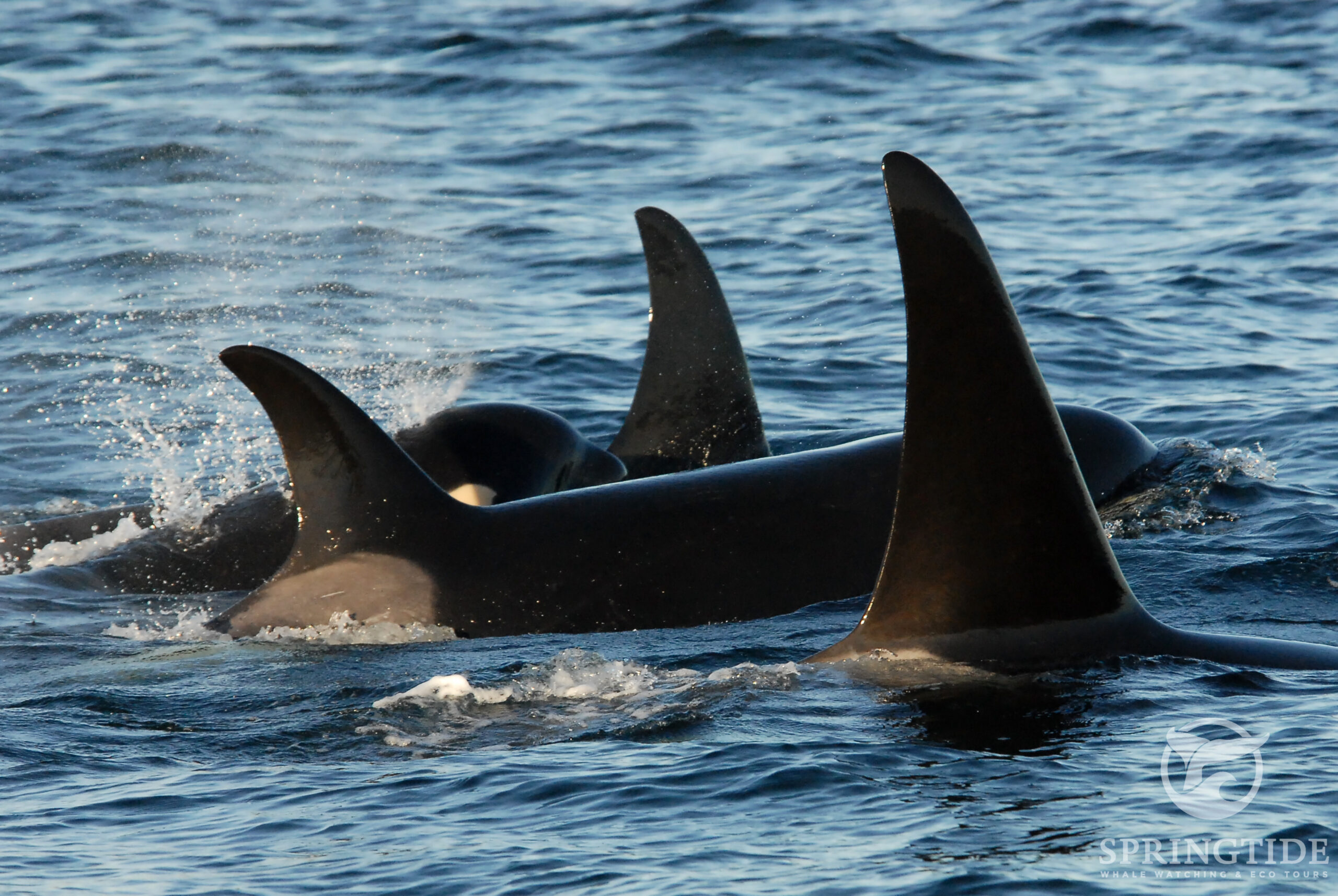As you may already know, we are lucky enough to receive the visit of two very different populations of orcas here, in the Salish Sea: the southern residents and the transients. Now you might be wondering in what ways they differ? Well they not only differ anatomically but also behaviorally.
Here are the main differences between our two orcas, southern resident vs transient:
Ecology
Southern resident orcas inhabit British Columbia (Canada) and Washington (USA) waters. They are currently estimated at only 83 individuals.
Transient orcas occur throughout the Eastern North Pacific (from Alaska to California). Thus, their geographic range overlaps that of the southern residents and is a lot larger. There are about 320 individuals.
Anatomy
The maximum size of southern resident orcas is around 7.2 meters. Their dorsal fin is generally rounded at the tip. They present a large variety of saddle patch pigmentations (the grey pigmentation along the side and behind the dorsal fin) and the saddle is often “open” (when the large areas of black color mix into the grey of the saddle patch).
Transients are larger than southern residents; they grow up to 8 meters long. Their dorsal fin tends to more pointed at the tip than those of southern resident orcas. They present a smaller variety of saddle patch pigmentations than southern residents and don’t have open saddle patches. Most of the time, the saddle patch is further forward on transient orcas (post midline of dorsal fin) than on southern resident orcas.
Diet
Southern resident orcas primarily eat fish with a neat preference for Chinook salmon.
Transient orcas feed nearly exclusively on other marine mammals like pinnipeds (seals, sea lions…) and cetaceans (porpoises, small whales…).
Sociality
Southern residents generally live with their mothers for their entire lives. These family groups are matrilines consisting of the eldest female (matriarch) and her offspring, and the offspring of her daughters… These matrilines are highly stable. Individuals leave the group for only a few hours at a time, to mate or forage. Closely related matrilines form loose aggregations called pods, usually consisting of one to four matrilines. Unlike matrilines, pods may separate for weeks or months at a time. Clans, the next level of social structure, are composed of pods with similar dialects, and common but older maternal heritage.
Transient families are smaller than southern resident families, typically consisting of an adult female and one or two of her offspring. Unlike southern residents, extended or permanent separation of transient offspring from natal matrilines is common. Some males become “rovers” and do not form long-term associations, occasionally joining groups that contain reproductive females. Like the southern residents, transient orcas form pods and clans.
Behavior
Southern resident orcas are feeding on fish, which can’t hear clicks and whistles. Thus southern residents can vocalize and echolocate while looking for their food. They are indeed very “chatty” animals and show a very complex vocal repertoire. Residents often seem to celebrate festive occasions and gatherings of pods with repeated breaches, tail slapping, spyhops, accompanied by a wide variety of vocalizations.
Unlike fish, marine mammals can hear very well and detect clicks and whistles, so transient orcas vocalize and echolocate very rarely while searching for their prey. Instead, they will use their vision and hearing. Unlike southern residents, transients wait until their prey has been caught before they start socializing and making noise. Their vocal repertoire is less complex than that of resident orcas.
—
Laureline Formanek, Phd
Onboard Naturalist/Biologist for SpringTide Whale Watching & Eco Tours
